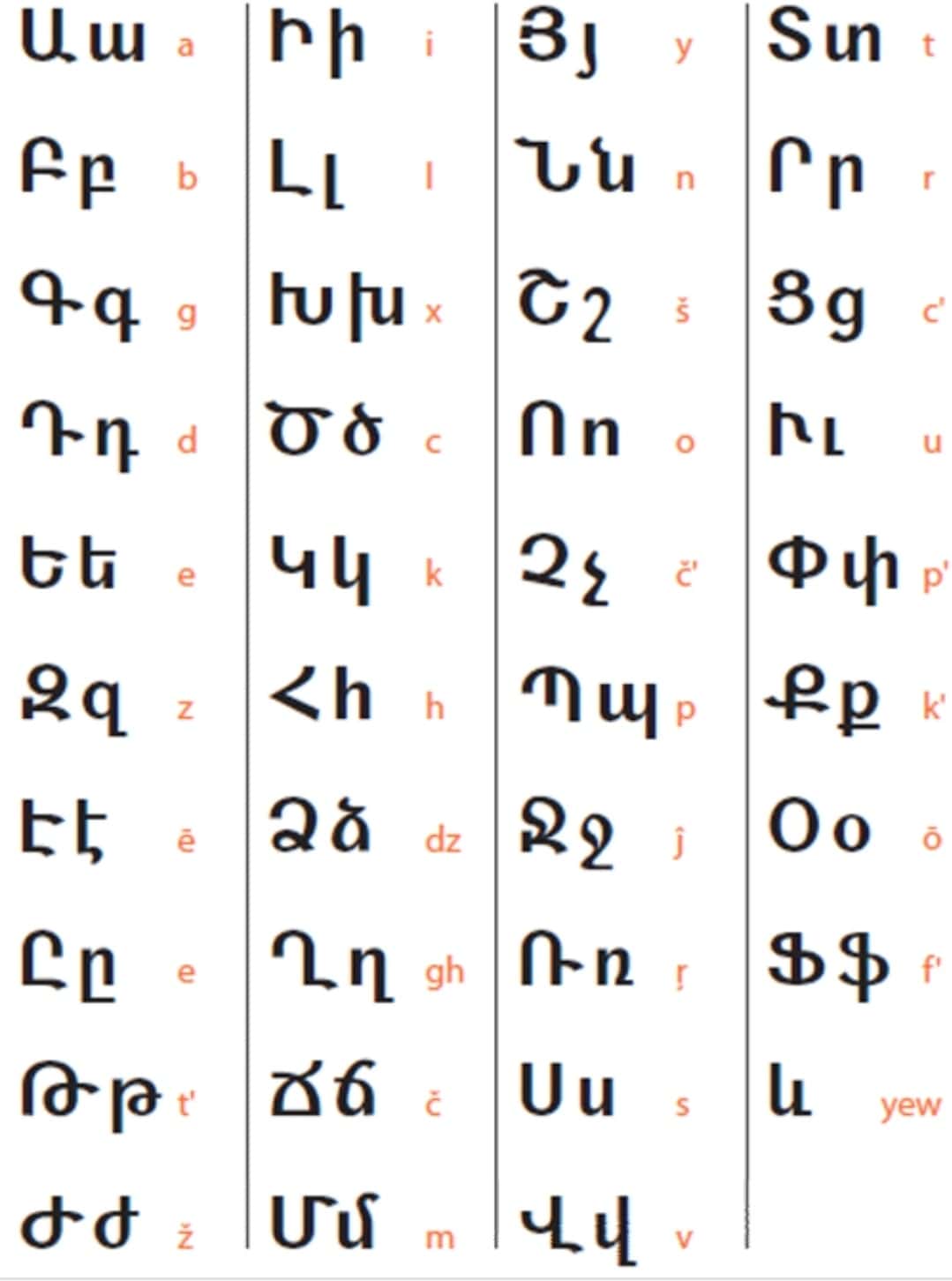How Did We End With 38 Letters?

It is common knowledge that Mesrop Mashtots invented the Armenian alphabet with 36 letters in the fifth century. The last of them was ք (k’). However, language evolved and made necessary to introduce two new letters; today, the Armenian alphabet has 38 letters. The first 36 letters also had a numeric value, still in use today, while the late newcomers did not have any such value.
O, օ (o, name “o”)
It is assumed that, in the fifth century, Armenians pronounced the diphthong աւ (aw) close to Spanish au (causa)or German au (sauerkraut), whereas the letter ո (currently vo)transcribed the sound represented by Greek omega (ω). Thus, the Greek name of Apostle Paul, Παῦλος (Paulos), became Պաւղոս (Paułos) in Armenian.
The eleventh century became a sort of watershed in the Armenian language. Krapar (Classical Armenian) ceased to be spoken and was confined to the realm of written language until its final demise for almost all purposes in the late nineteenth century.
Also about that time, the diphthong աւ started to be pronounced օ, similar to the English language (audit > ɔːdit). Such pronunciation was for “closed” syllables that ended with a consonant, for instance աւր (awr “day”), which continued to be written in the same way, but it was pronounced օր (or). To mark the difference in sound, they used conventional signs such as ^, ∞, or o over the diphthong աւ. The earliest transcription of the new sound with o appears to be the word փափագանօք (p’ap’aganok’ “with wishes”’), dated 1046.
The transition lasted around a century. In the meantime, the Armenian ո had adopted the sound vo at the beginning of words and ղ had become gh (like the r in Parisian French), instead of its past l-like sound. In the late twelfth or early thirteenth century, scribe Aristakes produced a work called «Գրչութեան արուեստ» (Art of Writing). The letter o entered officially the Armenian alphabet in the last chapter of this book, which became the oldest spelling dictionary of the language. It has been suggested that the letter was either derived from the Latin o or, which seems more plausible, patterned after the Greek omicron (ο), which was the actual source of the Latin letter.
Following these developments, a proper name like Պաւղոս started to be pronounced and spelled Պօղոս (Poghos, Western Armenian Boghos), and all closed syllables with the diphthong աւ changed their spelling. For instance:
| Classical Armenian հաւտ(hawt) կարաւտ(karawt) տաւն(tawn) |
Modern Armenian (Western Armenian phonetics)
հօտ (hod “flock”) կարօտ(garod “longing”) տօն (don “feast”) |
There was one exception to this rule: աղաւնի (*aɫawni, Modern Armenian aghavni “dove, pigeon”). It is assumed that the word was pronounced *aɫawəni, with the ը (schwa) following աւ, and that’s why it did not become աղօնի (aghoni).
Ֆ, ֆ (f, name “fe”)
The case of ֆ was different. The Armenian language did not have a sound f in the fifth century. Mesrop Mashtots, thus, used Armenian փ, an aspirated p, to render the Greek letter φ (phi), like Greek φιλόσοφος > Armenian փիլիսոփայ (p’ilisop’ay, Western Armenian pilisopa), which is the English philosopher. In this way, all foreign words transcribed into Armenian with the sound f rendered the latter as փ. Medieval Armenian historians and chroniclers, for instance, used փռանկ (p’rank) to name Europeans in general, which was the transcription of frank (name of the Germanic people that originated the term France).
The letter ֆ appeared for the first time in the eleventh century: patterned after the Greek φ, it was recorded in the proper name Մուֆարզին (Mufarzin, an Arab military post in southern Armenia) in 1037. It started to be widely utilized in the Late Middle Ages, apparently to transliterate loanwords from European languages.
However, Middle Armenian, a form of colloquial Armenian particularly used in Cilicia at the time both in speaking and in writing, has shown that the loss of the vowel coming immediately after an intervocalic ւ (v) turned the pronunciation of the latter into ֆ (for instance, հաւասար [havasar] > հաւսար [havsar] > հաֆսար [hafsar] “equal”) and, thus, created the possibility to loan words with the sound f. After observing this phenomenon, famous linguist Hrachia Adjarian (1876-1953) has pointed out that the sound f was based on Armenian and not European phonology.
In any case, the sound also appeared in proper names: one of the most famous poets of Medieval Armenia was Frik (Ֆրիկ, ca. 1230-1310).
